When it comes to portfolio construction most investors are laser focused on offensive assets.
Stocks and bonds.
The 60/40 portfolio.
But 2022 revealed this type of classic configuration is woefully unprepared for certain economic regimes such as high inflation.
What if there was a portfolio that cared just as much about its ability to defend?
Well, such a portfolio exists!
The Cockroach Portfolio.

Aside from having the coolest name in the game it also cleverly attempts to be “the least shitty portfolio”.
Now that’s a refreshing take in an industry rife with ego, bold claims and unfulfilled promises.
What’s different about The Cockroach Portfolio is that it takes a balanced approach to diversification between traditional and adaptive assets.
Fortunately, we have its creator Jason Buck to unpack everything in detail as we continue our “Strategy Behind The Fund” series.
Without further ado, let’s turn things over to Jason!

Meet Jason Buck of Mutiny Funds

Jason Buck is an entrepreneur and trader specializing in volatility, options hedging, and portfolio construction.
After living through 2008 as a commercial real estate developer, Jason became focused on how investors could better manage their risk.
He spent the following decade consulting on portfolio construction and building bespoke long volatility strategies for family offices and high net worth individuals.
This experience in cross asset class trading spotlighted the need to create a diversified long volatility and tail risk fund designed to hedge the risks associated with economic downturns.
A former D1 soccer player and IMG academy graduate, Jason currently resides in Napa Valley, California.
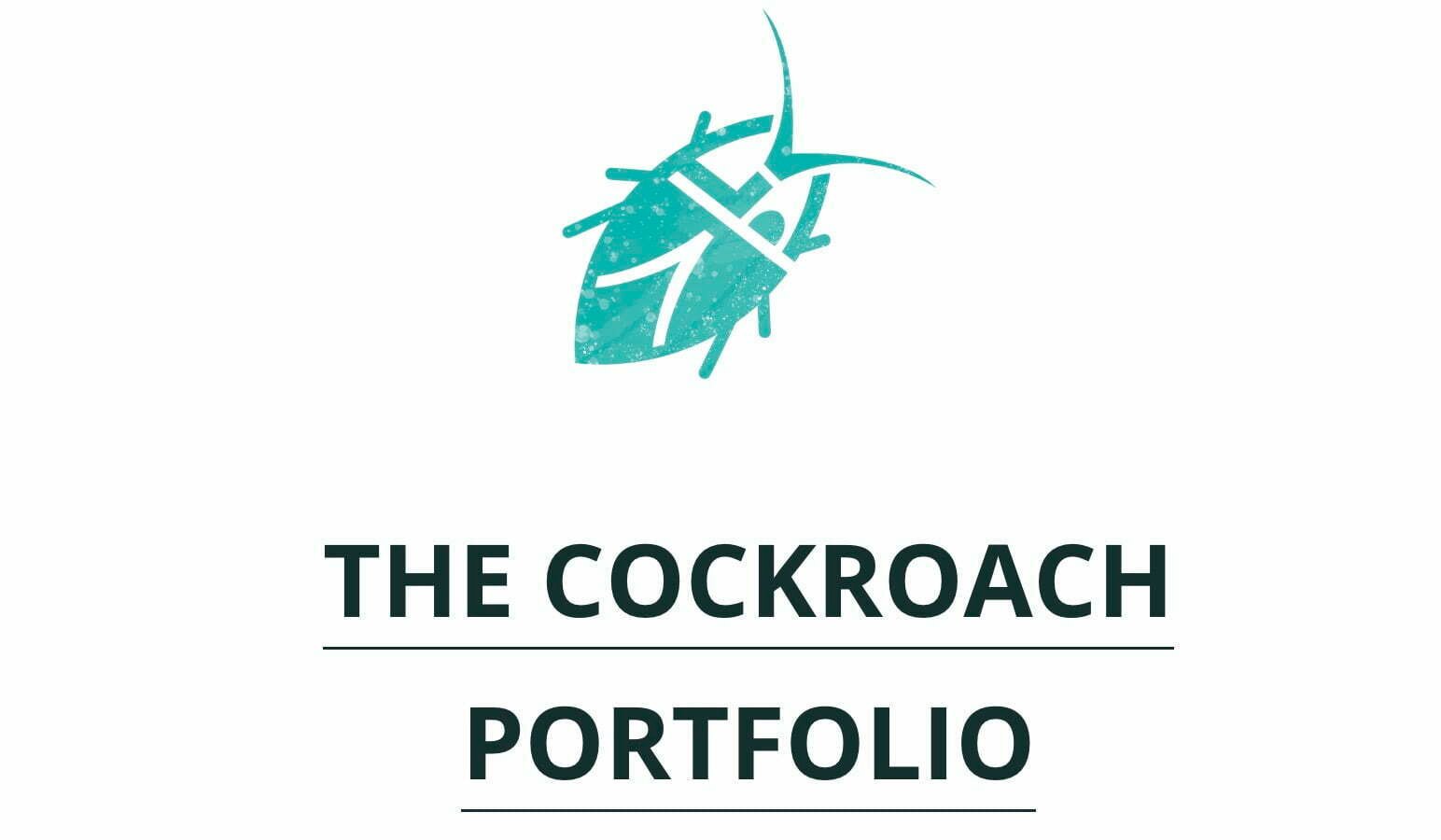
Reviewing The Strategy Behind The Cockroach Portfolio with its creator Jason Buck
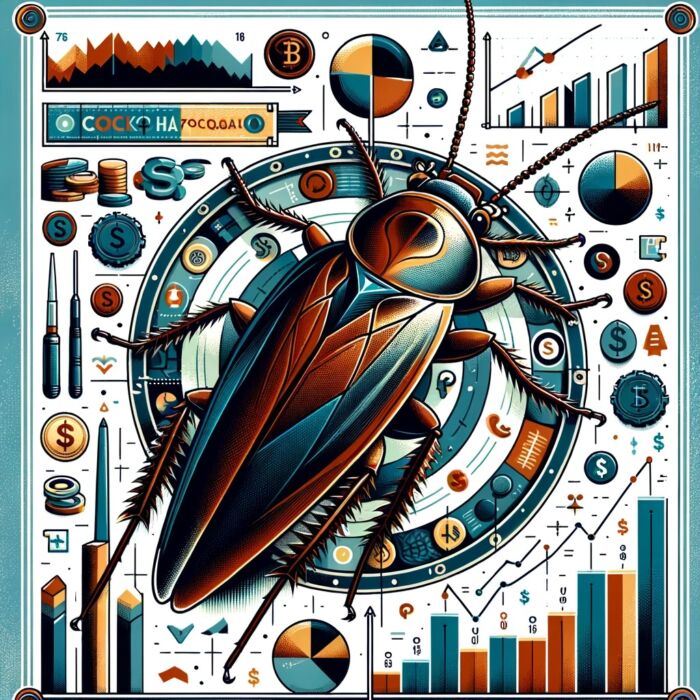
Hey guys! Here is the part where I mention I’m a travel content creator! This “The Strategy Behind The Fund” interview is entirely for entertainment purposes only. There could be considerable errors in the data I gathered. This is not financial advice. Do your own due diligence and research. Consult with a financial advisor.
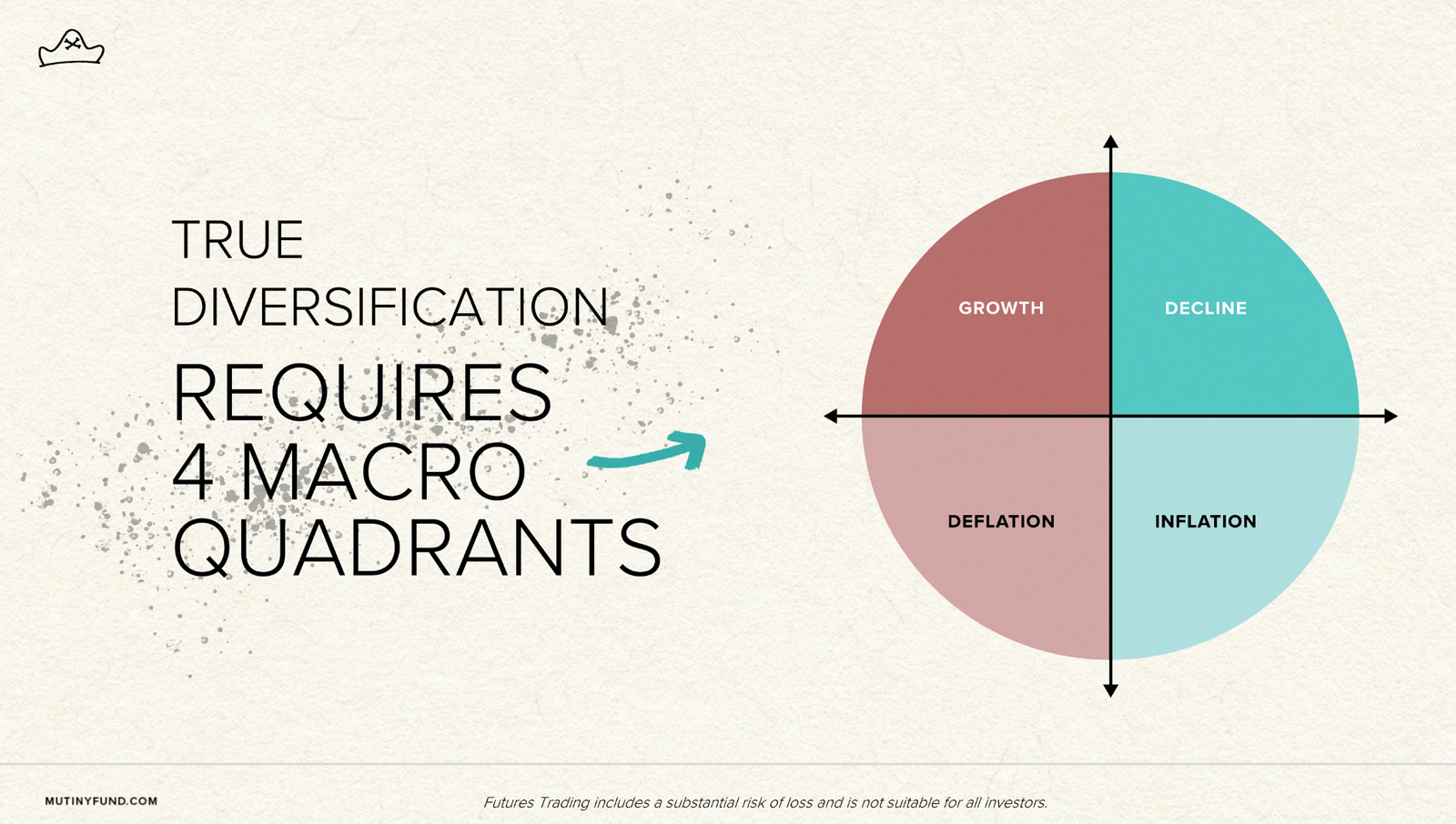
These asset allocation ideas and model portfolios presented herein are purely for entertainment purposes only. This is NOT investment advice. These models are hypothetical and are intended to provide general information about potential ways to organize a portfolio based on theoretical scenarios and assumptions. They do not take into account the investment objectives, financial situation/goals, risk tolerance and/or specific needs of any particular individual.
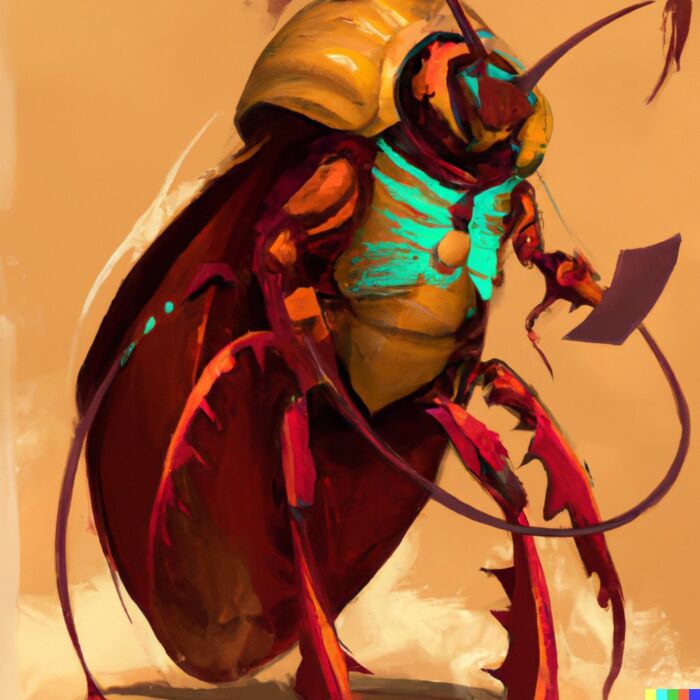
What’s The Strategy Of The Cockroach Portfolio?
For those who aren’t necessarily familiar with a “Cockroach Portfolio style of asset allocation” (that extends beyond merely stocks and bonds), let’s first define what it is and then explain this strategy in practice by giving some clear examples.
Our goal at Mutiny Funds is to help investors maximize the long-term growth of their portfolios.
We approach this problem differently than most because of our core belief that:
“Offense wins games. Defense wins championships.”

In an investing context, this means we believe that combining defensive-minded strategies such as long volatility or trend with offensive-minded strategies such as stocks or fixed income provides the best opportunity for long-term capital growth while reducing drawdowns in the interim.
The promise of diversification is to allow investors to improve risk-adjusted returns – either by realizing less risk for a similar return or a higher return for the same risk.
We view true diversification as the ability to accomplish the two things most investors care about in their portfolios:
Having a lot of assets in the future: That is, maximizing the long-term compounding, or expected terminal wealth of a portfolio.
Having enough assets in the interim: That is, making sure that if we need to use our assets for a family emergency, illness, or other unexpected life events (dare I say global pandemic?) in the near term, that it will be there when we need it.

We believe building a team of diversified strategies with different return drivers is the best way to facilitate these dual objectives.
The Mutiny Investment Strategy takes a multi-strategy, multi-manager approach.
This approach hopes to offer broader and more effective diversification across both offensive and defensive strategies.
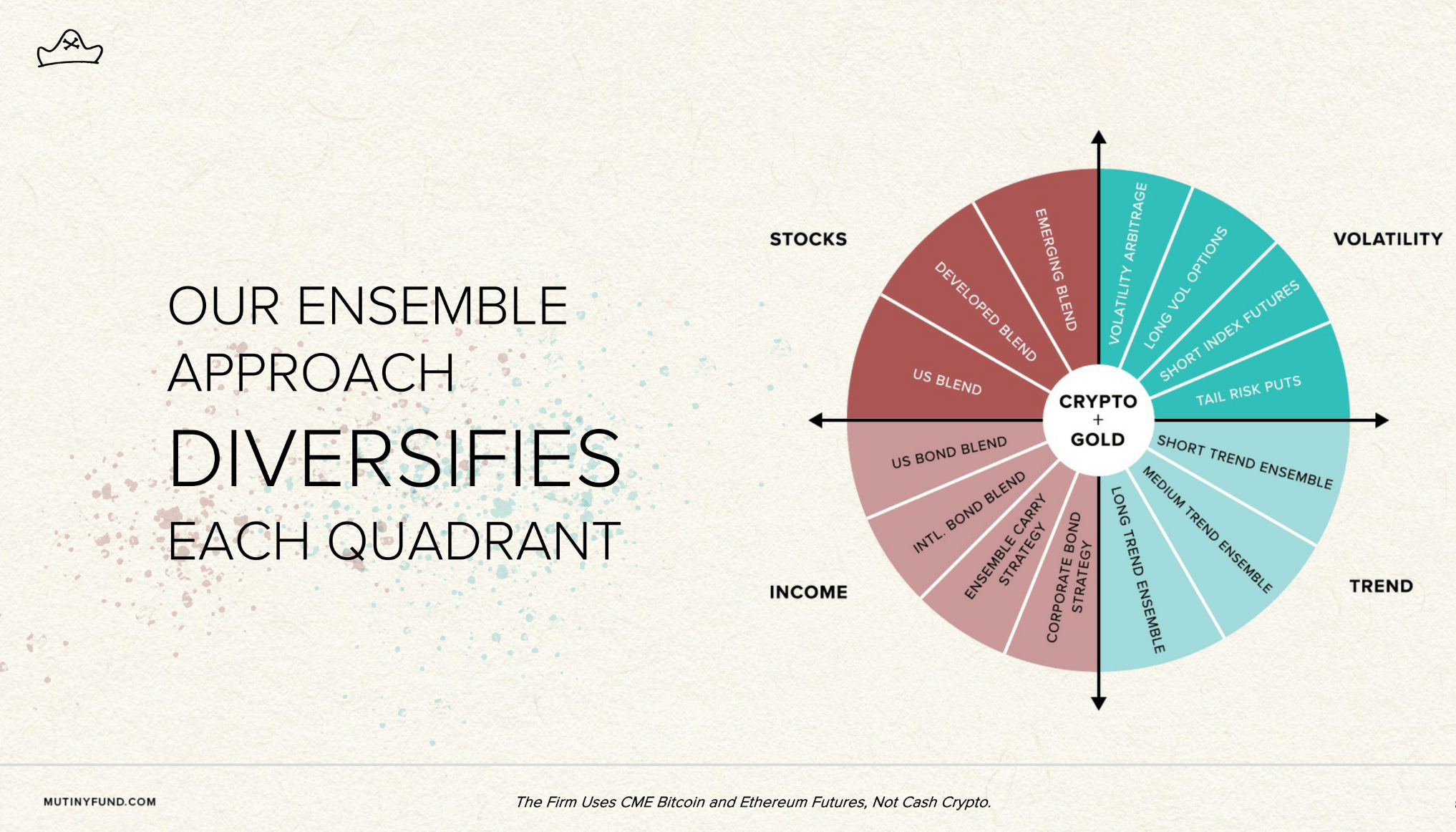

Unique Features Of The Cockroach Portfolio
Let’s go over all the unique features your fund offers so investors can better understand it.
What key exposure does it offer?
Is it static or dynamic in nature?
Is it active or passive?
Is it leveraged or not?
Is it a rules-based strategy or does it involve some discretionary inputs?
How about its fee structure?

We use the four quadrant model, originally designed by Harry Browne to cover as many macroeconomic environments as possible along the cross axis of Growth and Inflation.
We use equal allocations to: Global Stocks, Global Bonds, Long Volatility, and Commodity Trend.
We also carve off a little bit for Fiat Hedges with Gold, BTC futures, and ETH futures.
The asset class buckets are fixed weights that are rebalanced monthly.

We use an ensemble of active managers to be able to harness the dispersion of returns within the asset class buckets.
We use the implicit leverage that we can achieve in the futures and options markets.
This gives us notional exposures of: 50% Global Stocks, 50% Global Bonds, 50% Long Volatility ensemble, 50% Commodity Trend ensemble, and 20% for Fiat Hedges.
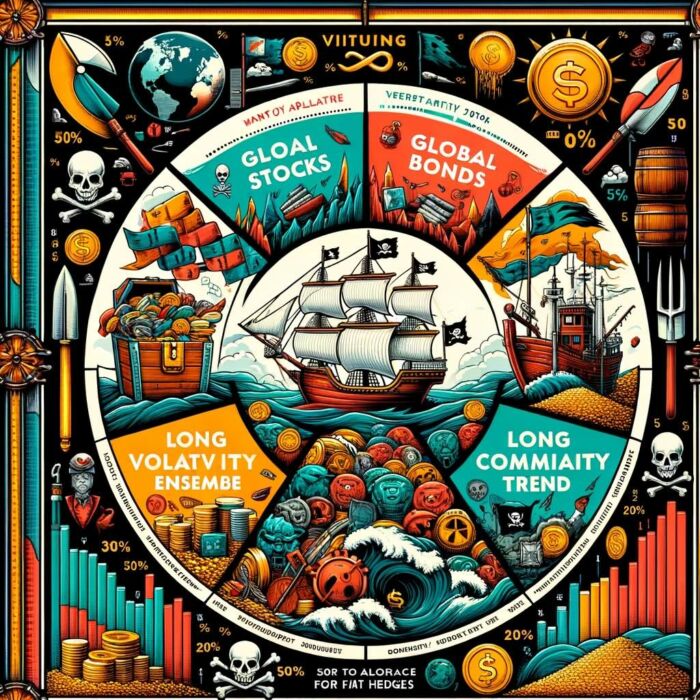
Every strategy, including the ones we don’t utilize, is a combo of rules-based and discretionary inputs, no matter how systematic they try to be, their discretionary inputs create the system.
We are a high fee product.
For us it is about what are your net return after fees on a risk/drawdown adjusted basis?

We provide 100% exposure to active management Defensive strategies, but we overlay the 100% exposure to the Offensive assets and manage those in-house.

What Sets The Cockroach Portfolio Apart From Other Asset Allocation Strategies?
How does your fund set itself apart from other asset allocation funds being offered in what is already a crowded marketplace?
What makes it unique?

My partner, Taylor Pearson, and I built exactly what we wanted that was not available in the marketplace.
Studies show that investors should have large allocations to Commodity Trend and Long Volatility.
Yet, no one actually does this in practice.
We run equal exposures to the Defensive side of our portfolio.
We also built this because non-institutional investors generally do not have access to products like ours.
Most of our managers have minimums of $5M, which becomes even more prohibitive when you are building ensembles.
We built our products so that we could personally access these strategies, and in taking on outside clients this allows us to collectively get access to these ensembles of active managers starting at a $100,000 initial investment.
source: Flirting With Models on YouTube

What Else Was Considered For The Cockroach Portfolio?
What’s something that you carefully considered adding to your fund that ultimately didn’t make it past the chopping board?
What made you decide not to include it?

We constantly are assessing managers across the investing landscape.
For example, we allocate to 14 Volatility managers and track another 30-40, which we believe is basically everyone in the Vol space.
There are a myriad of reasons why a strategy is not a good fit.
It’s more about finding niche managers that have a specific strategy that will fill out any holes in our ensemble approaches.
We decided early on not to include equity short selling strategies into our Long Volatility and Tail Risk ensemble because we believe these strategies are negative expected value, negatively skewed, and there are too many counterparty risks to their margin and borrow costs.
source: Mutiny Funds on YouTube
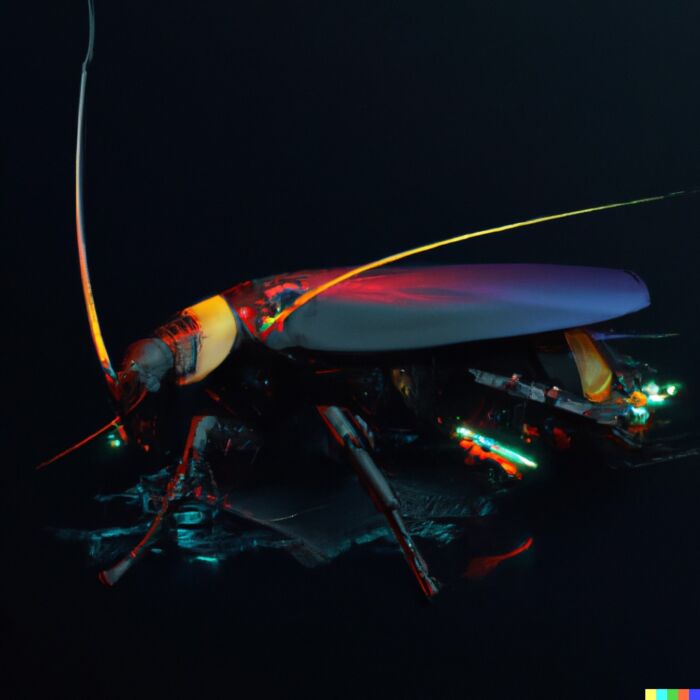
When Will The Cockroach Portfolio Perform At Its Best/Worst?
Let’s explore when your fund/strategy has performed at its best and worst historically or theoretically in backtests.
What types of market conditions or other scenarios are most favourable for this particular strategy?
On the other hand, when can investors expect this strategy to potentially struggle?

We try to build the least shitty portfolios.
Most people are trying to optimize for the perfect portfolio.
We do not believe this is possible.
We try to build boring, robust portfolios that just muddle along in any environment.
We are never going to be the best or worst portfolio in any given year.
By reducing the drawdowns, we believe our Cockroach portfolio will effectively and efficiently compound savings over the short and long term.
The point to proper portfolio diversification is that you will always have a part of your portfolio that makes you want to puke.
We do not have a crystal ball, we cannot predict the future, so we try to structure a portfolio that should survive any market environment.

source: ReSolve Asset Management on YouTube
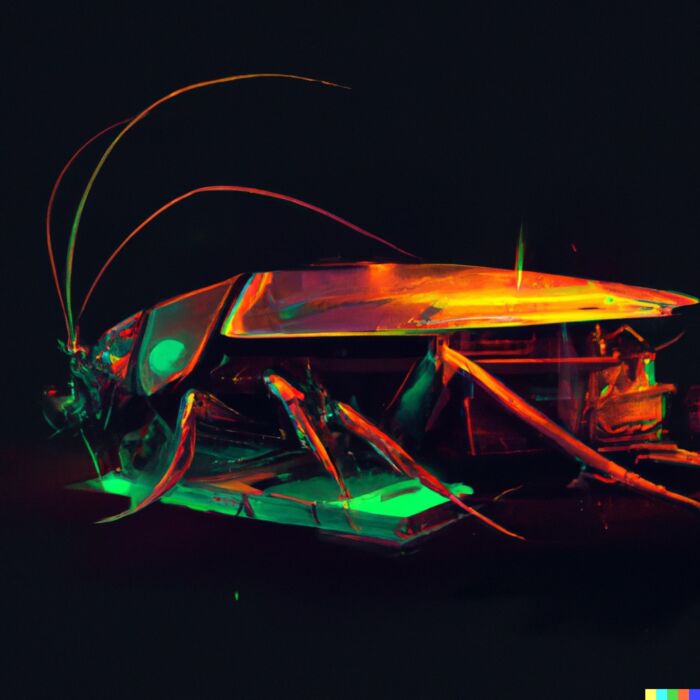
Why Should Investors Consider The Cockroach Portfolio?
If we’re assuming that an industry standard portfolio for most investors is one aligned towards low cost beta exposure to global equities and bonds, why should investors consider your fund/strategy?

We have no problem with beta as they tend to do well for very long stretches of time, until they crash unexpectedly.
We just believe that if we pair them with Defensive assets then it will improve your long-term risk-adjusted returns.
Long Volatility assets should do well when there is a liquidity cascade and everything sells off sharply.
Commodity Trend has historically done well in a long, slow, protracted drawdown or recession.
More importantly, it is about the emergent quality of a diversified portfolio and what rebalancing can do for you.
Take March 2020 as an example, as markets sell off, long volatility was providing a ballast, which is incredibly helpful from a behavioral standpoint of managing fear and not panicking.
In addition, the ability to rebalance the gains from the Volatility portion into Stocks at that lower cost basis, is exactly what we need to do to improve compounding.
source: Rocket Dollar on YouTube
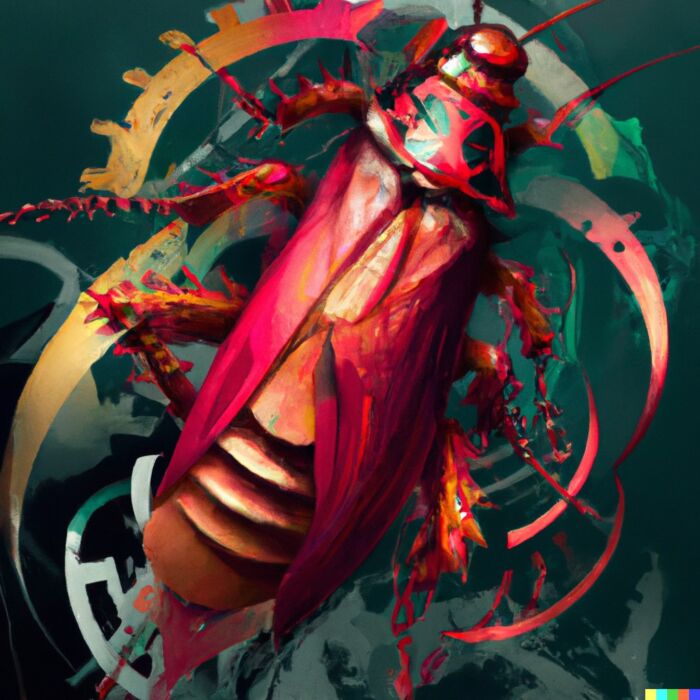
How Does The Cockroach Portfolio Fit Into A Portfolio At Large?
Let’s examine how your fund/strategy integrates into a portfolio at large.
Is it meant to be a total portfolio solution, core holding or satellite diversifier?
What are some best case usage scenarios ranging from high to low conviction allocations?

We believe the Cockroach Strategy is a Total Portfolio Solution.
We have 17 sub-managers, while continually adding more as AUM increases.
We also have almost 20 assets that we roll in-house on a monthly basis using the futures markets.
We feel this is one of the most broadly diversified Total Portfolio Solutions we have ever seen, which is why we built it.
We believe that the Cockroach Strategy tends to pair well with deterministic cash flows that one can get from private Real Estate or private businesses.
The combo of our liquid markets portfolio and private illiquid assets has a nice symbiotic effect.

The Cons of The Cockroach Portfolio
What’s the biggest point of constructive criticism you’ve received about your fund since it has launched?

Generally I think people have hindsight bias and they don’t like true diversification.
People want all aspects of their portfolio to have positive returns, but this simply is not proper diversification.
Investing requires time which is multiplication not addition, and a portfolio like ours really shines over time.
We are not likely to be impressive over a month or a quarter.
source: Excess Returns on YouTube

The Pros of The Cockroach Portfolio
On the other hand, what have others praised about your fund?

Our clients tend to love the “set it and forget it” aspect of our strategy.
Clients love having access to the Defensive strategies that they previously did not have access to.
I would like to see people go back to a time where they were not checking their portfolios 7 times a day on their smartphones.
We hope to manage their savings prudently, so they can enjoy their daily passions and be more present with the people they love.
source: RCM Alternatives on YouTube

Constantly Improving & Working On Cockroach 2.0
We’ll finish things off with an open-ended question.
Is there anything that we haven’t covered yet that you’d like to mention about your fund/strategy?

We are constantly working on improving our portfolio and finding new niche managers.
We are always working on what Cockroach 2.0 could look like by combining what we do with those deterministic private cash flow investments into one capital efficient vehicle that holds all the world’s asset classes and rebalances them.

The Cockroach Portfolio — 12-Question FAQ with Jason Buck
What is the core philosophy behind the Cockroach Portfolio?
The Cockroach Portfolio is built on the principle that a portfolio should defend as well as attack. Traditional 60/40 portfolios focus almost exclusively on offensive assets (stocks and bonds), leaving them vulnerable in inflationary or turbulent environments. The Cockroach approach allocates equally across offensive and defensive strategies to aim for robustness in any economic regime.
Why is it called the “Least Shitty Portfolio”?
Unlike strategies that promise perfection, the Cockroach Portfolio embraces imperfection. Its goal is not to be the best in any one year, but to avoid catastrophic failure. By diversifying across four economic quadrants—growth, inflation, deflation, and stagflation—it aims to “muddle through” any scenario, compounding steadily over time.
How does the Cockroach Portfolio balance offensive and defensive assets?
It splits allocations between Global Stocks and Bonds (offense) and Long Volatility and Commodity Trend (defense). A smaller allocation goes to fiat hedges like gold and crypto futures. This structure ensures that no matter the macroeconomic backdrop, at least one quadrant of the portfolio should provide ballast.
What are the four macro quadrants it’s designed to address?
Prosperity (rising growth, stable inflation): Stocks and bonds shine.
Inflationary booms: Commodity trend strategies thrive.
Deflationary busts: Bonds and long volatility provide protection.
Stagflation or chaos: Long volatility and commodities are defensive bulwarks.
This quadrant framework traces back to Harry Browne’s Permanent Portfolio, expanded for modern markets.
How does active management play a role in the strategy?
The Cockroach Portfolio combines systematic and discretionary elements. It employs ensembles of specialized managers for long volatility and trend following, while offensive exposures are managed in-house. Futures and options provide implicit leverage, allowing 50% notional exposure to each core sleeve plus fiat hedges.
What sets this strategy apart from other allocation models?
Unlike most asset allocation funds that give lip service to diversification, Cockroach allocates equal weight to defensive sleeves that few actually implement. It packages institutional-grade strategies (with $5M+ minimums) into an accessible structure for non-institutional investors, starting at $100K.
When does the Cockroach Portfolio perform best—and worst?
It’s not designed to be the star performer in any single year. Instead, it aims for steady compounding by reducing drawdowns. It tends to perform well during market chaos (e.g., March 2020) thanks to its defensive ballast. It may lag during straight-line bull markets, but that’s by design—boring robustness beats fragile brilliance over decades.
How does it fit into an investor’s broader portfolio?
It’s conceived as a total portfolio solution, not just a satellite diversifier. It pairs especially well with illiquid, deterministic cash flows like private real estate or businesses, creating a complementary mix of liquid macro strategies and stable income sources.
What assets or strategies were considered but excluded?
Equity short selling strategies were deliberately excluded from the long vol and tail risk ensemble. Jason and his team consider them negative expected value, with poor skew and high counterparty risks, making them a misfit for the portfolio’s defensive objectives.
What criticisms has the strategy faced?
Some investors dislike true diversification because it means some components will inevitably underperform at any given time. Others exhibit hindsight bias, expecting all sleeves to be positive simultaneously. The team’s response: time is multiplicative, not additive—diversification shines over the long haul, not quarter to quarter.
What praise has the strategy received?
Investors appreciate the “set it and forget it” simplicity and access to institutional-grade defensive strategies. By outsourcing complex ensemble construction, they can spend less time portfolio-watching and more time living their lives, trusting that both offense and defense are covered.
What’s next for the Cockroach Portfolio?
The team is continuously evolving the strategy, exploring Cockroach 2.0, which would integrate private deterministic cash flows with their existing liquid strategies into one capital-efficient, globally diversified vehicle—a true all-weather total portfolio.
Connect With Jason Buck of Mutiny Funds
Website: Mutiny Funds
Fund: The Cockroach Portfolio
Podcast: Mutiny Funds / Pirates Of Finance
Twitter: @MutinyFunds / @jasoncbuck (Jason) / @TaylorPearsonMe (Taylor)

Nomadic Samuel Final Thoughts
I want to personally thank Jason for taking the time to participate in the “Strategy Behind The Fund” series by contributing thoughtful answers to all of the questions!
Jason was also a guest for the “Investing Legends” series (The Cockroach Portfolio | A Diversified Portfolio Ready For All Economic Regimes) which I recommend checking out.
If you’ve read this article and would like to have your fund featured, feel free to reach out to nomadicsamuel at gmail dot com.
That’s all I’ve got!
Ciao for now!

Important Information
Comprehensive Investment Disclaimer:
All content provided on this website (including but not limited to portfolio ideas, fund analyses, investment strategies, commentary on market conditions, and discussions regarding leverage) is strictly for educational, informational, and illustrative purposes only. The information does not constitute financial, investment, tax, accounting, or legal advice. Opinions, strategies, and ideas presented herein represent personal perspectives, are based on independent research and publicly available information, and do not necessarily reflect the views or official positions of any third-party organizations, institutions, or affiliates.
Investing in financial markets inherently carries substantial risks, including but not limited to market volatility, economic uncertainties, geopolitical developments, and liquidity risks. You must be fully aware that there is always the potential for partial or total loss of your principal investment. Additionally, the use of leverage or leveraged financial products significantly increases risk exposure by amplifying both potential gains and potential losses, and thus is not appropriate or advisable for all investors. Using leverage may result in losing more than your initial invested capital, incurring margin calls, experiencing substantial interest costs, or suffering severe financial distress.
Past performance indicators, including historical data, backtesting results, and hypothetical scenarios, should never be viewed as guarantees or reliable predictions of future performance. Any examples provided are purely hypothetical and intended only for illustration purposes. Performance benchmarks, such as market indexes mentioned on this site, are theoretical and are not directly investable. While diligent efforts are made to provide accurate and current information, “Picture Perfect Portfolios” does not warrant, represent, or guarantee the accuracy, completeness, or timeliness of any information provided. Errors, inaccuracies, or outdated information may exist.
Users of this website are strongly encouraged to independently verify all information, conduct comprehensive research and due diligence, and engage with qualified financial, investment, tax, or legal professionals before making any investment or financial decisions. The responsibility for making informed investment decisions rests entirely with the individual. “Picture Perfect Portfolios” explicitly disclaims all liability for any direct, indirect, incidental, special, consequential, or other losses or damages incurred, financial or otherwise, arising out of reliance upon, or use of, any content or information presented on this website.
By accessing, reading, and utilizing the content on this website, you expressly acknowledge, understand, accept, and agree to abide by these terms and conditions. Please consult the full and detailed disclaimer available elsewhere on this website for further clarification and additional important disclosures. Read the complete disclaimer here.






